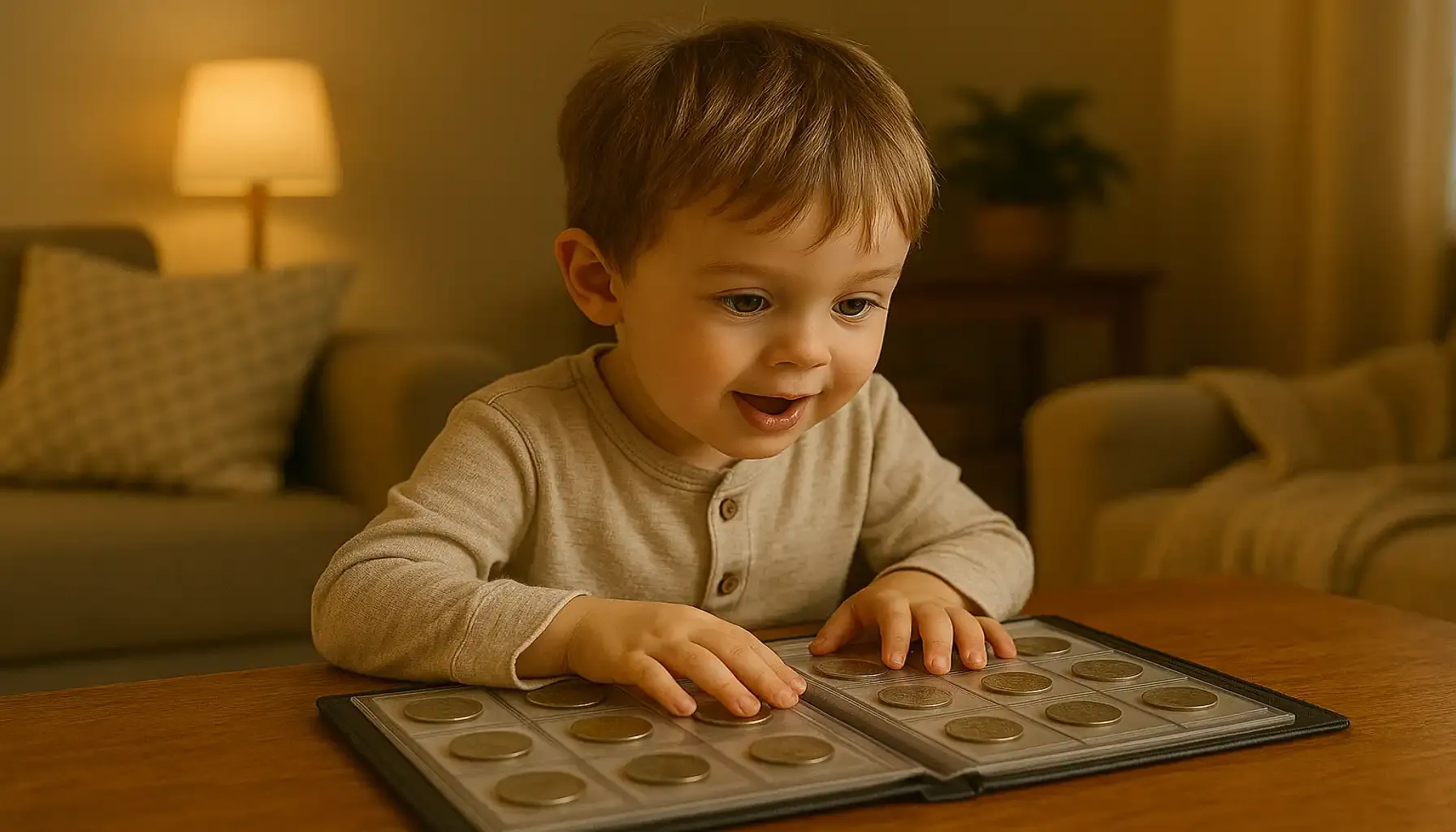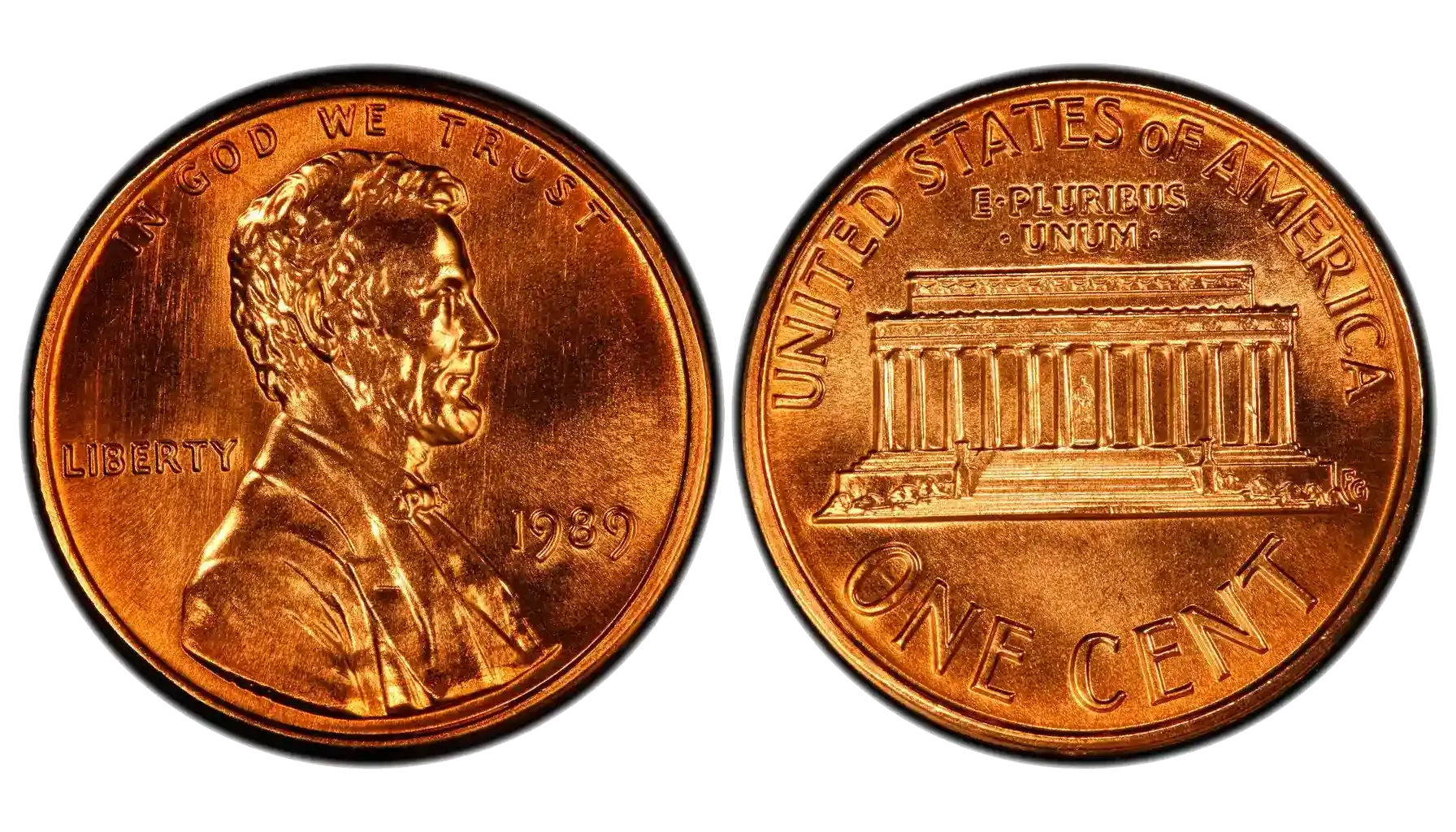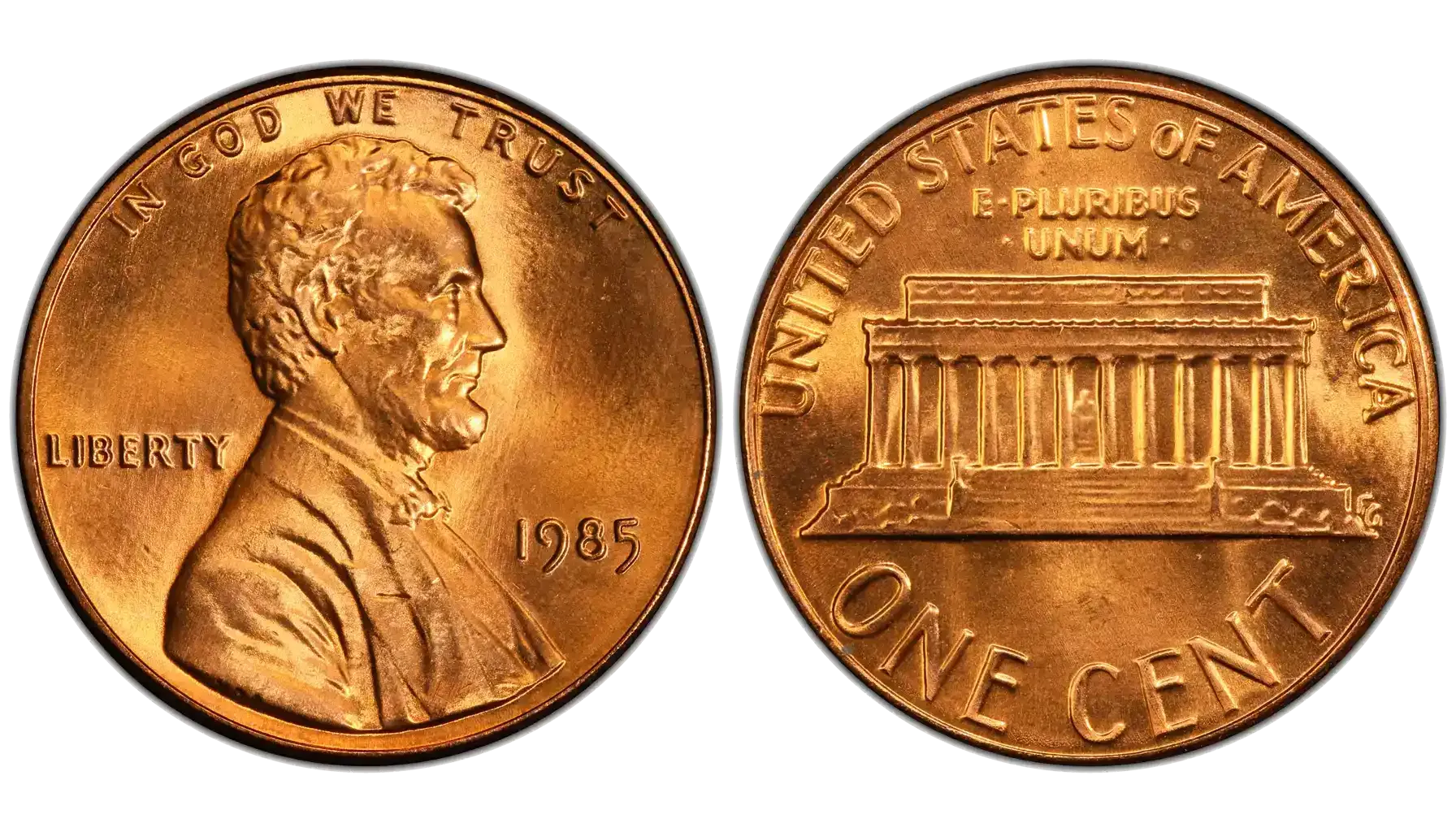Contents:
Lincoln Penny might seem like an ordinary coin, but no coin is truly ordinary. There might always be special variants and unique errors.
How much is a 1973 Lincoln Kennedy penny worth? Learn in this article! You’ll learn about the main varieties of this coin and whether they are rare or common.
The future is now. You can finally check coin value at home, just with your smartphone.
Lincoln Penny Overview
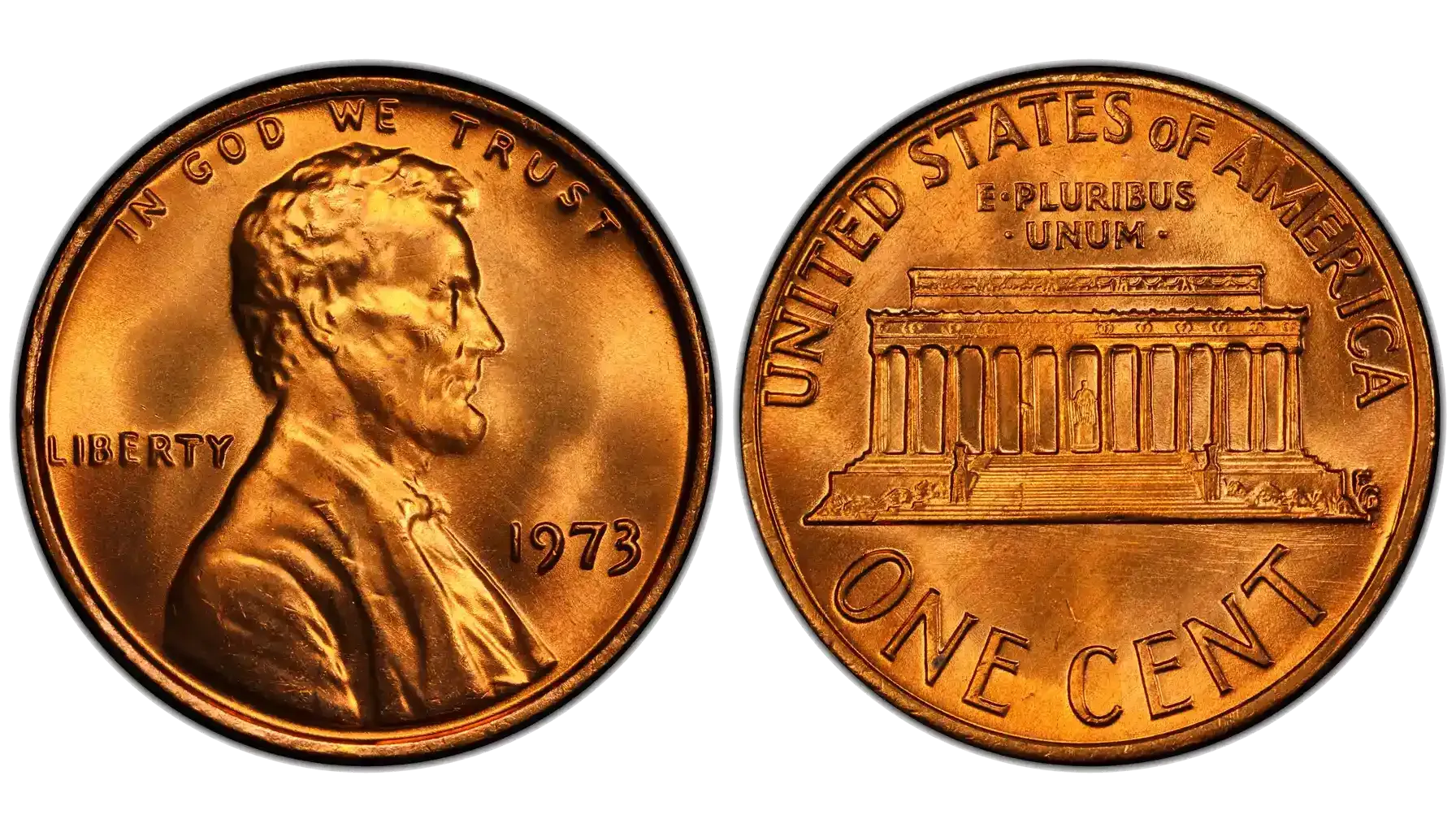
The Lincoln piece also has a second name, the 1973 Lincoln Memorial penny. All because of the new reverse design that came in 1959 and replaced the old wheat stalks background (seen on pre-1959 pieces like the 1917 penny).
Obverse: A right-facing bust of Abraham Lincoln, designed by Victor David Brenner. The designer’s initials “V.D.B” appear at the bottom of Lincoln’s shoulder. You’ll find inscriptions “IN GOD WE TRUST” along the top rim, and “LIBERTY” to Lincoln's left. The date (1973) is to Lincoln's right.
Reverse: Lincoln Memorial in Washington, D.C. The reverse is designed by Frank Gasparro. You’ll find inscriptions “UNITED STATES OF AMERICA” along the top rim, and “E PLURIBUS UNUM” just above the Memorial. The denomination “ONE CENT” is at the bottom.
The main characteristics of the 1973 Lincoln cent | |
Country | United States |
Years of Minting | 1959-2008 |
Type: | Standard circulation |
Shape: | Round |
Composition and metal content | Bronze (95% Copper, 5% Zinc) |
Diameter | 19 mm |
Weight | 3.11 grams |
The Mints | United States Mint of Denver, United States Mint of Philadelphia, United States Mint of San Francisco |
Lincoln Penny Varieties
While 1973 doesn't have any famous major varieties, there are still several known mint mark versions, like:
No mint mark version: Produced in the Philadelphia Mint
D-mark version: Produced in the Denver Mint
S-mark version: Produced in the San Francisco Mint
1973 Penny No Mint Mark
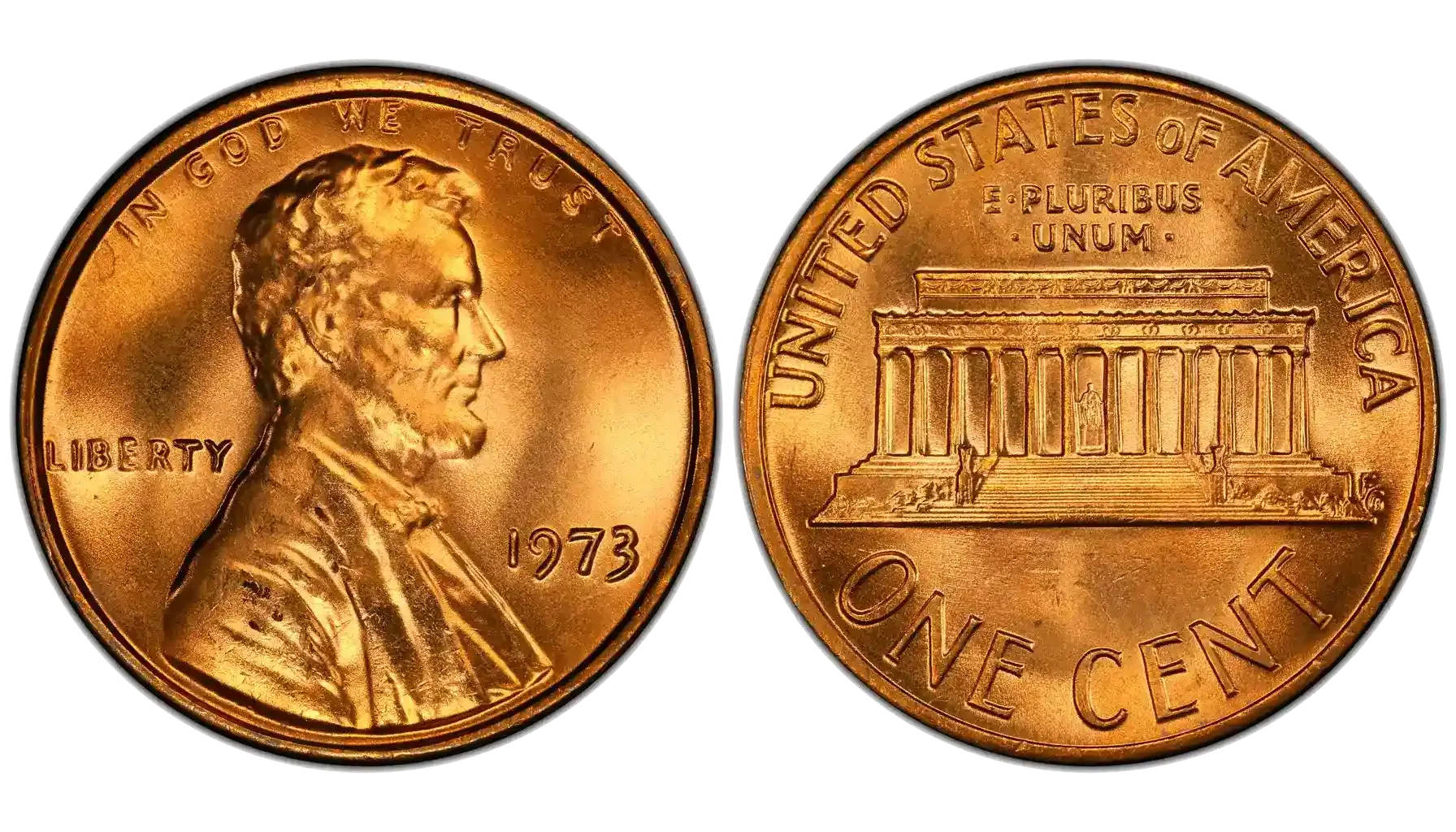
Identified by: Under the date on the obverse, there’s a blank space instead of a mint mark.
Mintage: 3,728,245,000.
Estimated value: $0.01 in circulated grades, $16+ in uncirculated. The 1973 penny value no mint mark is not exceptionally high.
1973 no mint mark penny is the most abundant variety. The Philadelphia Mint usually made the most coins. Unfortunately, a big mintage doesn’t come with a big price.
1973 D Penny
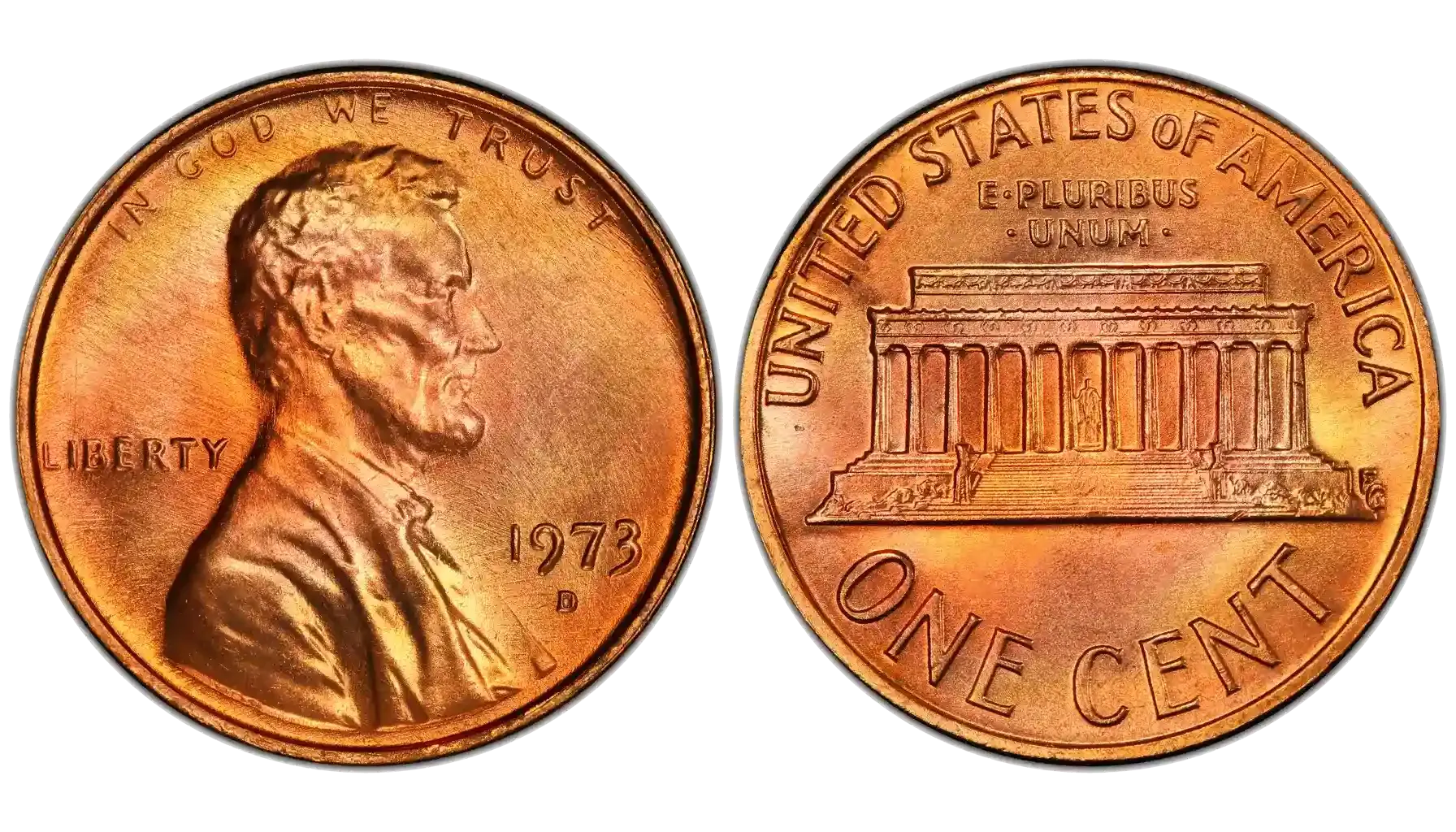
Identified by: Under the date on the obverse, there should be a “D” mint mark.
Mintage: 3,549,576,588.
Estimated value: $0.01 in circulated conditions, $16+ in uncirculated. The 1973 D penny value is allegedly the same as the Philadelphia variety.
Denver made almost the same number of coins in 1973 as Philadelphia. In general, they also don't offer much value.
1973 S Penny
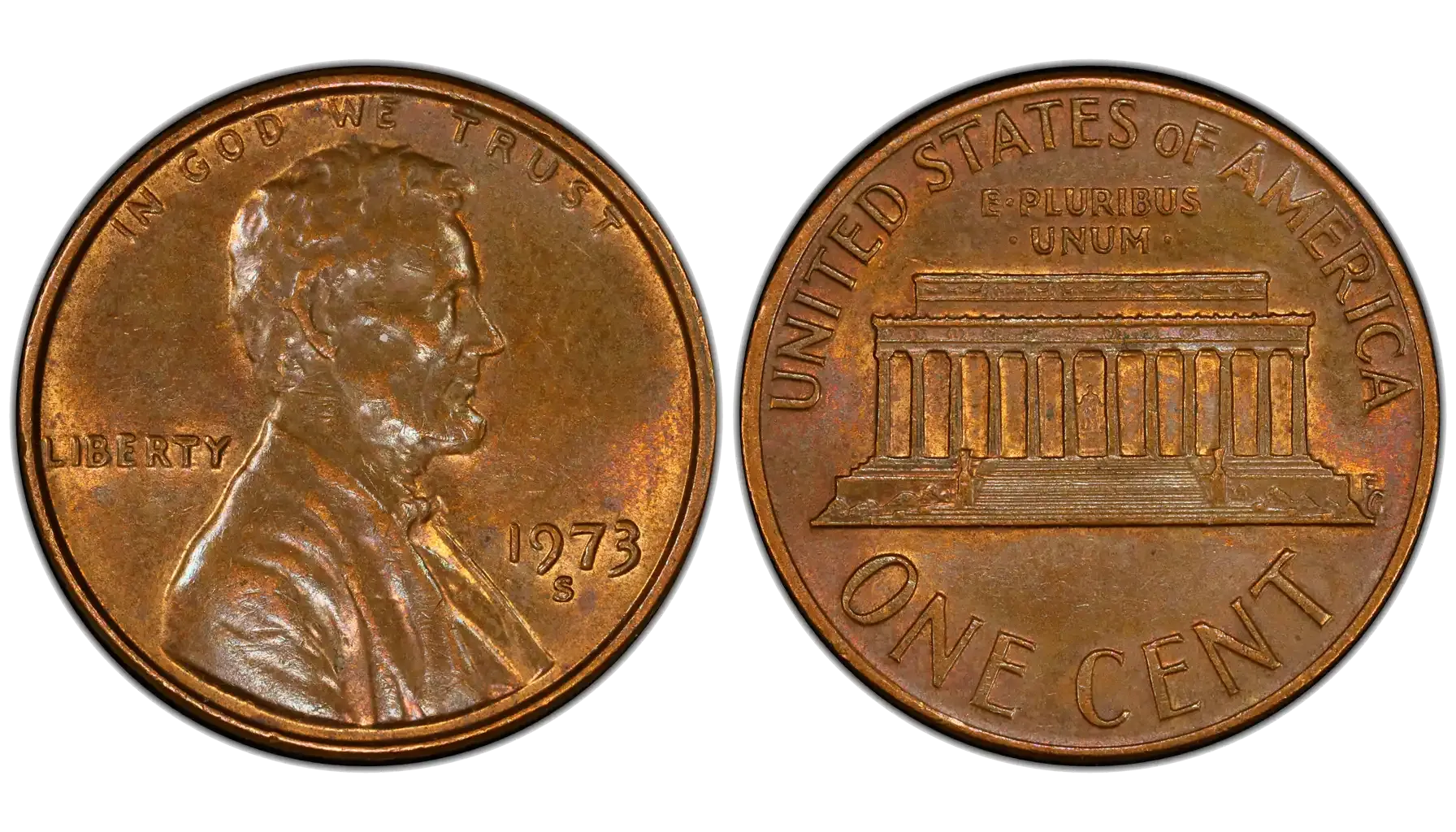
Identified by: Under the date on the obverse, there should be an “S” mint mark.
Mintage: 319,937,634.
Estimated value: $8+ in uncirculated. The 1973 S penny value is higher due to a lower mintage.
Fun fact, the San Francisco mint made this variety with a delay, so people thought that they would miss the 1973-S. Generally, 1973-S is more valuable than its counterparts. None were made for circulation, so they all have excellent grades.
Penny Grading
Grading is one of the biggest value factors. A 1973 penny worth something usually comes in MS or Mint State qualities. They have luster, all the details, and have an eye appeal.
Grade | Description |
G-4 (Good) | Heavily worn; outlines visible, but major detail gone |
VG-8 (Very Good) | Moderate wear; date and lettering fully readable |
F-12 (Fine) | Light wear; LIBERTY and some coat detail visible |
VF-20 (Very Fine) | Moderate detail; most of Lincoln’s features present |
EF-40 (Extremely Fine) | Light overall wear; sharp lines on hair and coat |
AU-50 (About Uncirculated) | Nearly no wear; small rub on high points |
MS-60 (Uncirculated) | No wear; may have dull luster or bag marks |
MS-63 (Choice BU) | Nice luster, few minor marks, decent eye appeal |
MS-65 (Gem BU) | Bright red luster; very sharp with few marks |
MS-67 (Superb Gem) | Nearly perfect with full red color; rare |
Copper coins are also graded depending on their colours. Copper can oxidize, so the more vibrant the metal is, the better the coin.
Red (RD) = Highest value
Red-Brown (RB) = Mid-range
Brown (BN) = Lower value
Valuable-Increasing Factors
With grading, other factors come into play when determining the most valuable Lincoln pennies:
Rarity. A coin is rare if:
Few were ever made (low mintage)
Few survive today (due to melting, loss, or circulation wear)
Condition/Grade:
The better the condition, the higher the value, especially in older or common coins
Coins are graded from Poor (P-1) to Mint State (MS-70)
Uncirculated (MS) and Proof (PR) coins bring a high value
Demand (Popularity). Even common coins can be valuable if many people want them:
Series like Lincoln cents, Morgan dollars, and Buffalo nickels are highly collected. They are a classic
Special themes (e.g., U.S. presidents, states, historical events) may also boost interest
Coins can be trendy too! People are on the hunt for American silver eagles lately
Mint Errors & Varieties. Coins with mistakes from the U.S. Mint can be worth much more:
Off-center strikes, die cracks, and clipped planchets are more common as errors, but still raise value
Repunched mint marks (RPMs), Doubled dies (e.g., 1955 DDO Lincoln cent) are less frequent and offer more value
Some mint marks are more prone to errors. For example, the 1973 D penny error list with pictures is bigger than it would be for S-pennies
Metal Content. Coins may contain silver, gold, or copper:
90% silver U.S. coins were minted before 1965, and their value was high. For example, a 1946 Roosevelt dime is silver
A 1973 Lincoln is copper-based, and copper coins have a lower value
Authentication /Certification:
Coins graded by professional services (e.g., PCGS, NGC) are trusted more and sell for higher prices
Certified coins are sealed, graded, and verified, making them safer investments
1973 Penny Error List with Pictures
What errors can you usually encounter with such a coin? Here are some of the most prominent, either in how common they appear, or how valuable they are.
Off-Center Strike

Identified by: Part of the design is missing, shifted to the side.
Estimated Value: $10–$50+.
Error Cause: The coin wasn’t properly centered in the striking press.
A very abundant error that could be hard to notice in milder cases.
Repunched Mint Mark (RPM)

Identified by: The mint mark looks like it was struck twice. Look under magnification for a second "D" under or beside the first.
Estimated Value: $5–$30+.
Error Cause: The mark was accidentally made twice.
A very niche error because the Philadelphia coins have no mint marks, and S-pennies usually had higher quality control. It leaves only D-pennies with such an error.
Double Die
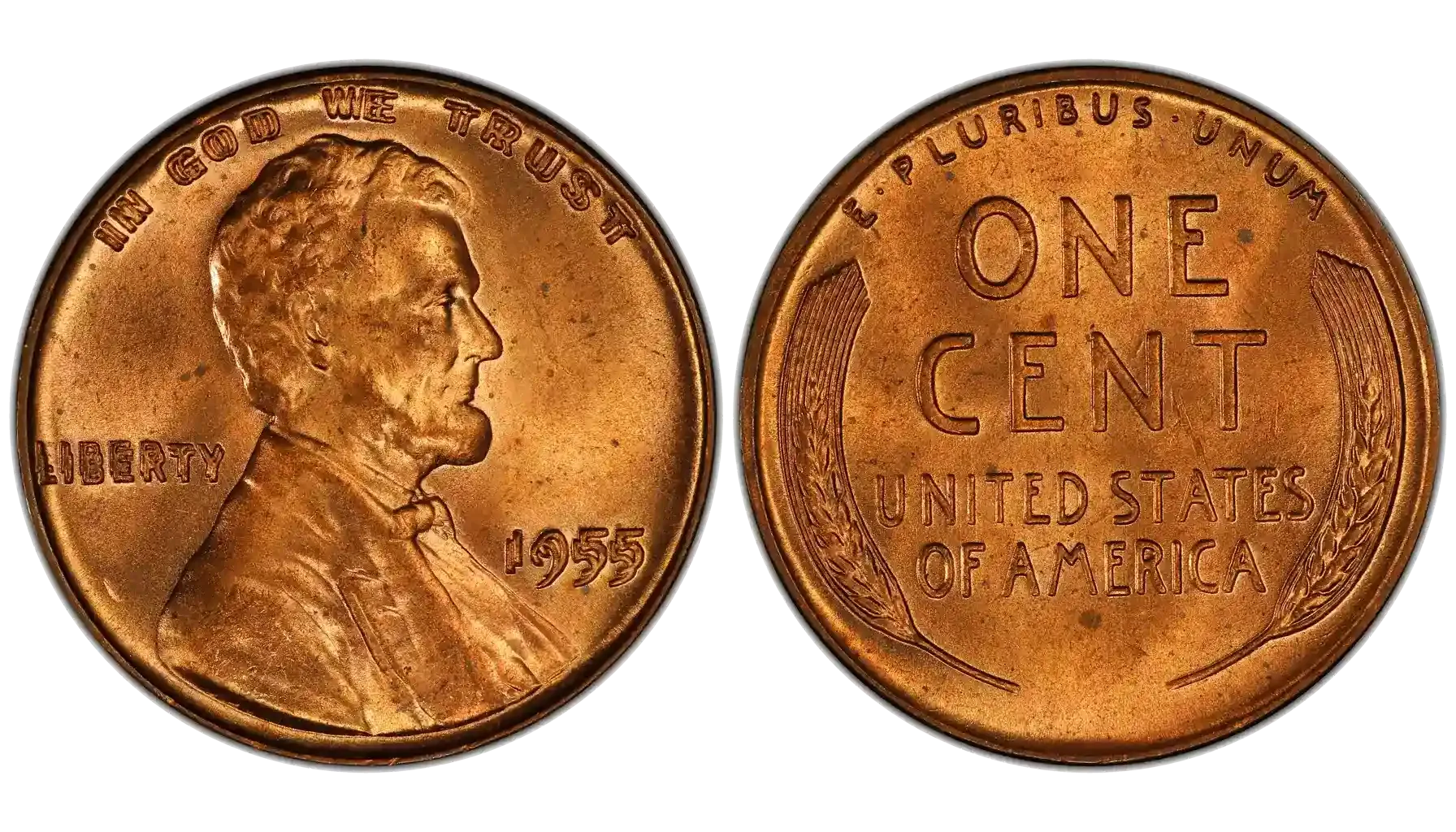
Identified by: A slight doubling of lettering (e.g., "LIBERTY" or date).
Estimated Value: $100+.
Error Cause: The die was impressed twice with slight misalignment
This error is similar to the repunched mint marks. The difference is that other coin elements are doubled, too.
1973 Penny Value
Is a 1973 penny worth anything? Judge the value by this table:
Mint Mark | Grade / Condition | Approximate Value |
(No mint mark) + D mark | G-4 to VF-20 (worn) | $0.01 – $0.10 |
EF-40 to AU-50 | $0.10 – $0.25 | |
MS-60 to MS-63 | $0.25 – $1.50 | |
MS-65 (Gem BU) | $2.00 – $6.00 | |
MS-67+ (Superb RD) | $15 – $50+ | |
S mark | PR-63 to PR-65 | $1.00 – $4.00 |
PR-67 to PR-69 | $5.00 – $15.00+ | |
PR-70 Deep Cameo | $25 – $40+ (rare, certified) |
No mint mark and D pennies have similar values. S marks seem to dominate due to a smaller mintage.
Aluminum Lincoln Penny and Misconceptions
Martplaces like to feed you false information. “Hey, I’ve got an extremely rare 1973 Abraham Lincoln brown penny no mint mark very few people have!”
It’s important to be knowledgeable about the piece you want to acquire. One of the biggest misconceptions surrounding the Lincoln series is the 1973 aluminum penny that technically doesn’t exist. Only the 1974 edition is real.
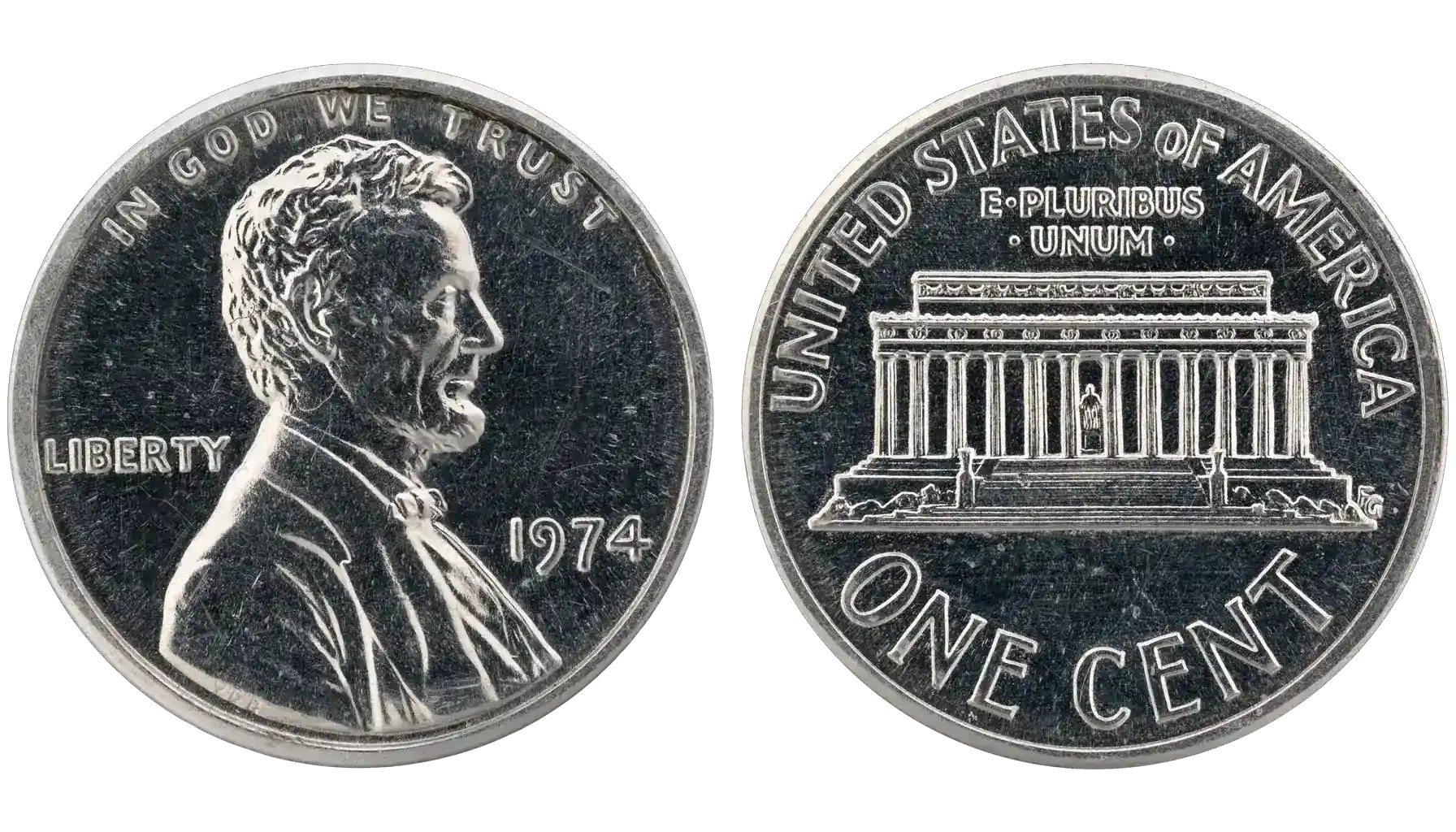
The US Mint was experimenting with new material for the 1974 release. A new penny would be composed of aluminum instead of the usual copper. They made the initiative in response to rising copper prices in the early 1970s. Yet, due to a backlash, they had to discontinue the 1974 Alluminum penny.
Some aluminum pieces are still left out there, but if someone tries to sell you one, it’s likely a counterfeit. Be on your guard.
One minor misconception is when people mix denominations. For example, the 1973 50 cent piece value is different from a penny. 50 cents is a half-dollar, so you’re actually dealing with a different denomination.
Coin ID Scanner
Here’s an app that has many Lincoln pieces and other coinage (150.000+ entries). Coin ID Scanner does Instant coin identification via photo.
Snap or upload a photo of your collectible
Еhe app uses AI to identify the coin
The app shares the bit’s country, denomination, year, composition, mint marking, and more!
As a neat addition, the platform comes with grading guides, overviews and numismatic news. Something that both a beginner and a professional collector would enjoy.
Interested in Coin ID Scanner? Download the app for free today for iOS/Android.

